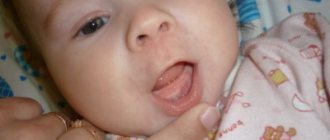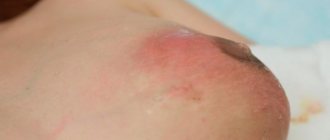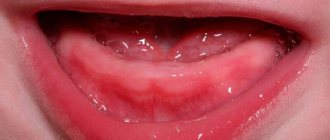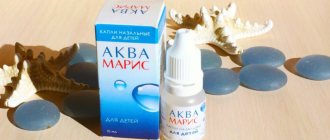how to speed up teething
The timing of teething can characterize both the biological and passport age of the child. The process and timing of teething depend not only on inherited genetic parameters, that is, how they erupted in mom and dad, and even in ancestors in the seventh generation. The timing of teething can be influenced by external and internal factors. For example: climatic conditions, diet, quality of drinking water, etc. In this regard, the timing of the eruption of permanent teeth in children varies in different regions. The hotter the climate, the earlier teething usually occurs. Although this is also not an axiom.
Baby teeth usually begin to emerge at 6-8 months. A one-year-old baby, as a rule, celebrates his first birthday with four upper and lower incisors in his mouth. By the age of two, the first primary molars and canines erupt. Second primary molars appear after another six months. Complete formation of the primary dentition is usually completed at three years of age. By the age of three, a child should have grown all 20 baby teeth.
What to do if by 9 months your child has not yet erupted a single tooth?
First of all, don’t worry ahead of time. Dentists consider a delay in the eruption of primary teeth within 6 months to be completely natural. However, boys tend to erupt teeth later than girls.
Start by carefully examining your baby’s gums: it is very likely that they look swollen and reddened, or, on the contrary, the gums are thin and pale, and the edge of the tooth can be felt underneath and even visible. In order to speed up teething, buy special ring toys - teething stimulators. A light massage of the gums with a clean finger is also useful. Pressure on the gums facilitates and speeds up teething, and cold reduces discomfort.
Delays in teething can be caused by general growth retardation due to a number of child diseases, primarily rickets. Consult your pediatrician: your baby may need vitamins or calcium supplements to maintain normal mineral metabolism.
In rare cases, children have edentia - the absence of tooth buds. So if your baby is over a year old and his teeth have not yet begun to emerge, you should consult a dentist. You can check the presence of tooth germs using an x-ray. X-ray irradiation may be unsafe for a child’s body, so this study should be performed only when necessary and as prescribed by a doctor. Today it is possible to reduce the harmful effects of X-rays if you take a picture using a radiovisiograph. Such equipment is usually available in every modernly equipped dental clinic.
How to determine that a child is already cutting his first tooth?
Symptoms of a baby's first teeth erupting include red, inflamed gums, burning cheeks and, possibly, an already swollen white ball from which a tooth is about to emerge. True, he can make himself wait. Before being exposed, the tooth must first pass through the bone tissue that surrounds it, and then through the mucous membrane of the gums.
Is it necessary to somehow help teething?
You should not interfere with the natural course of events, because nature has provided that children’s teeth are born independently, without special external efforts or additional devices. There is no need to irritate your baby's gums by scratching them with a piece of sugar or the handle of a spoon, as was done before. This can damage delicate baby teeth and cause infection in the jaw bone. Be careful with bagels, bread crusts, bagels: their crumbs can get stuck in the respiratory tract.
During a person’s life, 20 teeth change once, and the remaining 12 teeth do not change; they erupt initially as permanent teeth (molars).
All tables are approximate. According to statistics, the first tooth in modern infants appears on average only at 8 and a half months. Thus, the timing of the eruption of other teeth is shifted. Dentists believe that the later the first tooth erupts, the later the baby teeth will begin to fall out and this is undoubtedly good. However, before the baby is one year old, at least one tooth must appear, otherwise the causes should be looked for in some diseases, for example, rickets. The first tooth can be paired with the second, and the same is true with subsequent teeth. It happens that a baby has 4 teeth at once. Naturally, such “massive” growth of teeth affects the timing of teething. The situation is also uncertain with the order in which teeth appear; you simply cannot influence this, so “don’t worry in vain,” because everything goes as nature intended.
By the age of three, all baby teeth erupt in a child, which by the age of 5 begin to gradually be replaced by permanent ones.
There are 20 primary teeth in total: on each jaw there are 4 incisors (4 central teeth), 2 canines (third teeth) and 4 molars (fourth and fifth teeth).
By the age of 10-12 years there are 28 teeth.
An adult normally has 28-32 permanent teeth: each jaw has 4 incisors, 2 canines, 4 premolars and 4-6 molars. The development of the third molar (“wisdom tooth”) may not occur at all, with congenital edentia of the third molars, which is also considered normal. Another situation is also possible: a wisdom tooth is embedded in the thickness of the jaw, but does not erupt due to incorrect position or lack of space in the jaw. This situation occurs very often.
After all the baby teeth have erupted, there are no gaps (gaps, gaps) between them, which is normal. But as the jaw grows, before the baby teeth are replaced by permanent ones, gaps should appear between the baby teeth. This process is necessary because permanent teeth are larger in size than baby teeth and if spaces are not formed, then the permanent teeth do not fit in the jaws and the child receives “crooked” permanent teeth.
In parallel with the formation of spaces between temporary teeth, the roots of baby teeth are “reabsorbed”, after which the teeth alternately become loose and fall out. Nowadays there is even a fashion to buy a box made of gold or silver to store the first teeth.
There is no general opinion about the normal timing of teething, since scientific studies by different authors were carried out in different regions and in different years of the last and present century.
What to do if teeth erupt at the wrong time?
Nothing to do. There is no clear concept of “late teething”, or rather “teething dates” are relative, generally accepted terms, and not strict data. These terms are determined by average values and depend on neonatal (how the birth went) indicators, physical constitution, individual characteristics of the baby, etc. So, no matter what time teeth erupt, this period is normal for this child. By the way, the same applies to the eruption of permanent teeth and wisdom teeth. Only in rare cases of obvious pathologies can the timing of eruption really be abnormal.
The later teeth erupt, the healthier they are?
Unfortunately, this is not the case - the timing of teething and their “quality” are in no way connected.
The child is teething. If it hurts a lot...
Teething may be accompanied by increased excitability: the child becomes restless, capricious, often wakes up crying at night, and may refuse to eat. At the same time, the baby puts any object in his mouth, since chewing reduces the itching of irritated gums. The secretion of saliva is sharply increased, which, flowing from the mouth, can cause skin irritation. Often, a limited area of redness or rash appears on the cheek on the side of the erupting tooth. The child's temperature may rise to subfebrile levels (within 37.8°). However, fever does not necessarily accompany teething.
During teething, one or another infection may develop. Therefore, if your baby develops symptoms such as nausea, vomiting, ear pain, diarrhea, cough, rash, persistent loss of appetite or high fever, you should consult a doctor.
What remedies relieve pain?
The simplest thing is cold. Cold relieves pain and reduces swelling. If this does not help, you can use dental gel or ointment containing anti-inflammatory and pain relievers to lubricate the gums. If necessary, you can give your child a pain reliever. Any medications should be used only as prescribed by a doctor.
What sedatives can be used in children during teething? Do these drugs affect the teething process?
No, these drugs do not affect the teething process in any way. They have all been clinically tested and naturally have no side effects. The only limitation is children with allergies, but there is also a sedative for them - Doctor Baby. Almost all such gels contain lidocaine and inert fillers (menthol for cooling, flavoring agents and astringents). The following drugs can be recommended:
Dentinox Kalgel is sweet and should not be used if you have diathesis. Kamistad is very effective, but must be used in moderation. Mundizal Cholisal "Solcoseryl" dental paste (available for external use, do not confuse it) - especially effective if there are bleeding wounds or painful ulcers. Dr. Baby - for allergies to lidocaine
How often can soothing gels be used?
Soothing gels do not need to be used according to a specific regimen (such as antibiotics). If it hurts, you apply it, if it doesn’t hurt, don’t apply it. But don’t get too carried away, it’s better not to use it more than 3-4 times a day and more than 3 days in a row.
How to speed up teething?
No medication. A method proven over the years is a gentle massage of the gums. Gently massage the gums with a clean finger and the child will feel better, and the tooth will erupt a little faster. Just don't press hard, don't injure yourself. Usually they give the child a cold spoon to suck on, but it is better to keep the pacifier in the refrigerator for a while and give it to the child. There are special teethers with coolant. Place in the refrigerator. Then you give it to the child to chew on. But not for long.
Can bad breath occur during teething and what is the reason for this?
During teething, the mucous membrane partially decomposes (lysis). Salivary enzymes play an active role in this process. As you know, the amount of saliva increases during teething. This is due specifically to the lysis process. This can actually change the viscosity, color and smell of saliva. In addition, saliva contains weak antibacterial substances that prevent infection of the wound formed during tooth eruption. Their active influence can also change the normal properties of saliva. A certain amount of blood also enters the oral cavity, and when it decomposes, a sour (metallic) odor may also arise.
What to do if the temperature rises sharply during teething?
A slight increase in temperature during teething is normal. But she won't be 39-40. If the temperature is very high, some kind of infection is to blame, and not the teeth themselves.. Attention: teething should not cause severe fever, diarrhea, vomiting, complete loss of appetite, cramps and suffocation. If you experience these symptoms, even if you think they are related to your teeth, consult your doctor. It is also not recommended to give a child an antipyretic and analgesic (syrup, suppositories) without consulting a doctor and at a body temperature below 38.5 C.
How can children distinguish between an increase in temperature during teething and an increase in temperature for some other reason? How long can a fever last during teething?
Everything is individual, but generally hyperthermia and diarrhea are only secondary signs of teething. For a very small organism, this is a severe physiological fracture. Now most pediatricians and physiologists admit that increased temperature during teething is most likely a reaction to inflammation of the oral mucosa. At the site where the teeth emerge, irritation forms, often a wound (from friction and due to lysis), and often the wound becomes infected. So the increase in temperature is not caused by the mechanism of tooth formation itself, but with complications. One of the arguments in favor of this opinion is that when permanent teeth erupt, despite the similarity of histological and physiological changes, such symptoms almost never occur.
The occurrence of cold and diarrhea symptoms is explained by a sharp change in diet and diet, constant foreign objects in the mouth and microflora disturbance, as well as a weakening of local immunity in the nasopharynx.
From this we can conclude that if the fever and loose stools continue for too long (more than 72 hours), then the reason most likely is not teething.
Possible characteristics of teeth in children at the teething stage.
Expansion of spaces between teeth. It may reflect increased jaw growth and during the transition period from baby teeth to permanent teeth is regarded as a normal condition. A wide gap between the front incisors on the upper jaw is usually associated with a deep-lying maxillary frenulum. The tactics for monitoring and treating wide gaps between teeth are determined by an orthodontist.
A blackish edging on the neck of the tooth can be due to the use of soluble iron preparations or a chronic inflammatory process (precipitation of bacteria of the leptotrichium group);
Yellowish-brown staining of teeth is most often associated with the use of antibiotics by the mother in the second half of pregnancy or by the child during the period of teeth formation.
A yellowish-greenish color develops in severe disorders of bilirubin metabolism and hemolytic (destruction of red blood cells) conditions;
Reddish staining of tooth enamel is characteristic of a congenital disorder of pigment metabolism - porphyrin. This disease is called porphyria;
Malocclusions occur due to uneven growth of the jaws, due to prolonged sucking of the nipple; Anomalies in the location of teeth occur for constitutional reasons (small jaw size), due to trauma, congenital disorders of connective tissue metabolism, and tumors of the alveolar process of the jaw.
The absence of teeth before 1 year of age is extremely rarely associated with edentia - the absence of their rudiments. You can check the presence of tooth germs using a special radiovisiography method prescribed by a pediatric dentist.
The main thing is that you don’t worry, even if the order and timing of teething for your baby is not the same as everyone else’s - all children are individual. If you still have serious doubts, ask your doctor or pediatrician about it - they will tell you everything.
You can also download a free reminder - How to care for baby teeth and use verses for washing and brushing teeth for the development of your baby on my blog.
Other aids to aid teething
Panadol syrup
Panadol syrup
The product has a pleasant taste, so children will not refuse to take the prescribed treatment. When teething, you can use syrup in two ways. The first option involves topical application of Panadol to the sore gum up to 6 times a day, since a small amount of the substance is used. Thanks to this use, the risk of side effects is reduced and there is no strong depressant effect on the kidneys. In another case, the syrup is taken orally, the dosage is selected according to the child’s weight. The number of daily doses is 2-3. Take the drug for no more than 72 hours.
Ibuprofen D
The drug Ibuprofen D
Also available in syrup form, which can be used in the ways described above. When used orally, the dose must be adjusted according to the child’s age and is taken from three months. Up to 6 months, the dosage is 2.5 ml three times a day; from the 7th month of life, Ibuprofen D is taken in the same doses, but up to four times. From the first year of life, a single dose is 5 ml three times a day. This amount of the drug is taken up to 3 years, when the process of the appearance of baby teeth ends. The duration of therapy cannot be more than 3-4 days.
Tsefekon D suppositories
Cefekon D in the form of suppositories
The main active ingredient of the drug is paracetamol. When choosing these suppositories, you should carefully select the dosage, which depends on the age of the patient. From the first month of life to three months, the drug is available in a dose of 50 mg; from 4 months to 3 years, the drug is taken in a dose of 100 mg. Taking into account the severity of symptoms when baby teeth appear, children are prescribed up to 3 rectal suppositories per day with the same period of time. Candles should not be left on for more than 72 hours.
Efferalgan candles
Efferalgan in the form of candles
The product is also available in the form of syrup, but the fastest results are shown by suppositories, which quickly dissolve and the paracetamol included in the composition penetrates the bloodstream. The medication is available in a dosage of 150 mg, but these suppositories can be divided, since it is necessary to select the optimal amount of the active substance taking into account the baby’s weight. For each kilogram, 10-15 mg of the main component is selected. Three to four doses can be given per day, the maximum course of treatment is 4 days.
Attention! When using these remedies, you can not only relieve pain, but also reduce fever and improve the general condition of the child due to the process of the appearance of baby teeth.










